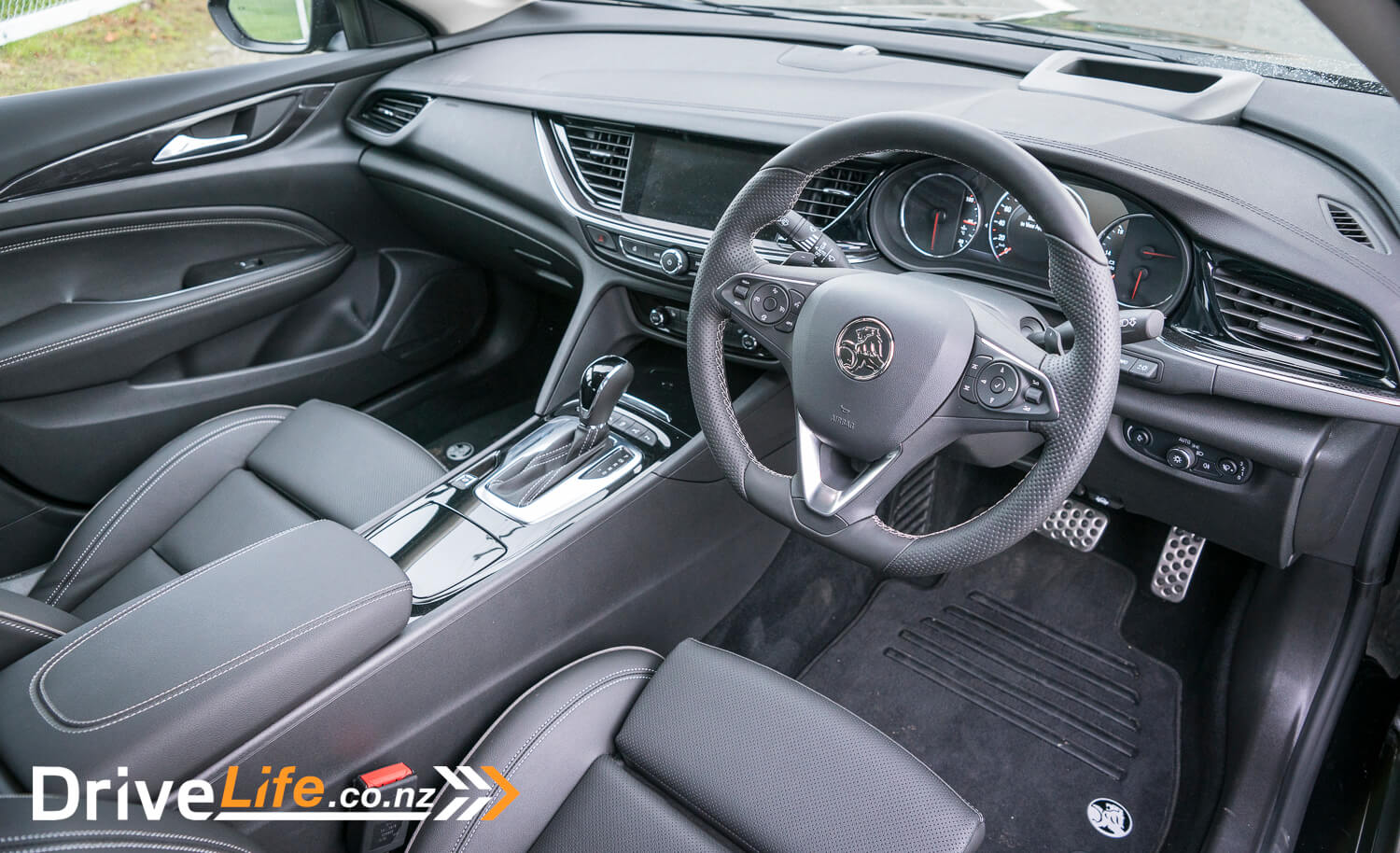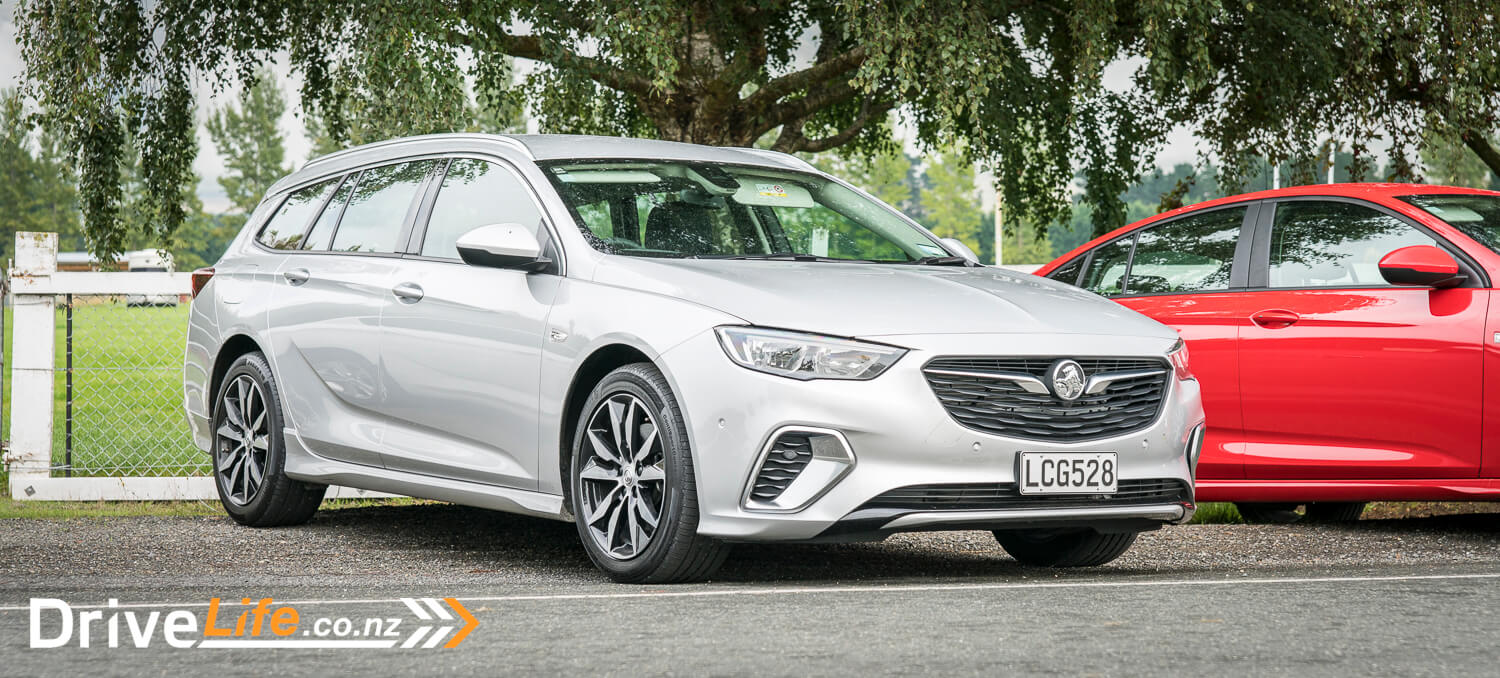Holden New Zealand chose Dunedin for the official press launch of the new 2018 Commodore and Commodore Tourer. The plan was to fly down in the afternoon for a briefing and then drive from Dunedin to Queenstown the following morning. After a cancelled flight, and stopover in Christchurch, we made it down in time for the evening’s briefing. We covered some of Holden’s history and the development of the new ZB Commodore, and the major changes that the model range will offer.
Let’s get in quick and rip the band-aid off. Sedans, manual gearboxes and V8’s are out, and no longer an option across any of the Commodore models. We now have liftbacks, which are more like a fastback sedan crossed with a hatchback. Every model comes with a 9-speed automatic with no other gearbox options available.
But that’s not as hard to swallow as the lack of V8’s. This is for most Holden fans the biggest bridge to cross. And the big question is, what engine options are available, and are they worthy of the Commodore’s name?
Before we go too far, we need to cover the range. The Commodore now comes in three body styles; the Liftback, the SportWagon and Tourer. The Commodore has 9 different variants, broken down into 3 main classes; Liftback Luxury, Liftback Sport and SportsWagon. In order of base to top spec model, the Liftback Luxury has LT, Calais and Calais-V. The Liftback Sport has the RS, RS-V and VXR. And the SportsWagon has the LT, RS and RS-V. The Liftback is available in LT, Calais, Calais-V, RS, RS-V and VRX. The SportsWagon is available in LT, RS and RS-V. Last but not least the Commodore Tourer is only available in Calais-V spec.
The 3 engine options are a 2.0L turbo petrol, 3.6L V6 petrol and a 2.0L turbo diesel. The 2.0L turbo petrol produces 191 kW and 350 Nm of torque and comes in front-wheel drive only. This engine is available in the Commodore Liftback LT, Calais and RS. It’s also available in the Sportwagon LT and RS. All vehicles with this engine have a 750kg unbraked towing, and 1800kg braked towing capacity.
The 3.6L V6 produces 235 kW and 381 Nm of torque which is paired with an adaptive all-wheel drive. This engine is available in the Liftback Calais-V, RS-V and VXR, Also in the Sportwagon RS-V. All vehicles with this engine, have a 750kg unbraked towing, and 2100kg braked towing capacity.
The 2.0L diesel produces 125kW and 400Nm of torque and is also front-wheel drive. This is only available in the LT of both the liftback and the sportwagon. All vehicles with this engine, have a 750kg unbraked towing, and 1800kg braked towing capacity.
The asking prices for this range starts with the Commodore LT
- Commodore LT Turbo Petrol is $45,990, Sportwagon is $47,990.
- Commodore LT Diesel is $48,990 and Sportwagon is $50,990.
- Commodore RS Turbo Petrol is $49,990 and Sportwagon is $51,990.
- Commodore RS-V 3.6L is $58,990 and Sportwagon is $60,990.
- Commodore VXR is $67,990,
- Calais turbo petrol is $52,990 and Calais-V 3.6L is $61,990.
- Commodore Tourer is $65,990
Confused yet? I was and I found it difficult to keep track of the names and specs over the two-day launch. Before we got to drive these cars, they ran through some of the new features available on these Commodore models. All new LED matrix Headlamps, Lane Keep Assist, Advanced Parking Assist, 360 Degree Camera, Adaptive Cruise Control, Android and Apple CarPlay, Bose premium audio system, Active Bonnet and an active safety feature called Holden Eye – all of which we will cover in our in-depth review, in a couple of months
The interiors across all models were well designed and functional. A nice mixture of materials and textures. Across the range the dash seemed to only change in two areas: The LT had a smaller centre console media screen, and standard dash cluster dials. As you went up the models the centre console screen got larger. And when you reached the top spec you got the largest LCD screen and a full LCD dash cluster with heads up display.
The only other noticeable difference were the seats, going from fabric in the LT to leather in the higher specs. The seats were good, while feeling smaller than the Commodores of old. I think some larger guys like myself may not feel as comfortable as they did in previous models.
Looking at the range as a whole, I felt there was not enough difference between the base model LT and the top spec Calais-V and VXR. With the only noticeable changes being the trim inlay panels design. This begged me to question the value in the price difference.
As there were so many models and a limited time to test them, I set my focus on testing the base LT and top spec Calais-V and VXR which had the two different engines available on at the launch. We’ll look at everything else in more detail once we get the car for a full review.
The first car I was able to get behind the wheel of was the Commodore RS-V liftback. This is the $58,990 liftback model with the 3.6L V6 and AWD. Pulling back on to the road after a driver swap, I felt pretty comfortable behind the wheel. The digital dash and heads-up display will be something many drivers will love. Lucky for me, this section of the drive had some good twists and turns, which would allow me to test out the AWD system. Accelerating up to 100 km/h felt pretty good – the engine had a bit of lag to it, between the driver’s demand for power and then engine’s response, but it pulled this car along very well.
The vehicle itself felt planted, probably thanks to the AWD system, without noticing it was there. In Sports mode the car sharpened up, with quicker throttle response and more precise steering. In this mode I did find it difficult to feather the power how I wanted it. It felt like it was either not enough, or it would jump up and give too much. With a longer test drive we will see if this would be annoying in everyday life. While in Sports mode we hit some metal/gravel roads, which gave me a chance to see how the AWD system worked. I gave it a few flicks left and right to unbalance it. I could feel the vehicle was now sliding around in the gravel, but it was still going where I wanted it too without any drama, very impressive. This will be a feature many families might look towards for peace of mind. Overall the RS-V was a good package, but I couldn’t help think that this 3.6L was missing a turbo for more even power distribution.
The next car I was behind the wheel of was the front-wheel drive LT Sportwagon with the 2.0L turbo-petrol engine. This was great, as I would get to see the big difference between the higher and lower spec models. And I’ll be honest, I was expecting it to be chalk and cheese compared to the RS-V. But it wasn’t this 2.0L turbo petrol engine was amazing. And if all the badges had been pulled off, and we just tested by feel, the sound would be the only indicator. As a Calais-V pulled out from the driver swap and accelerated up to cruising speed, I wanted to see if the turbo petrol could keep pace. While it can, the difference in power deliver and acceleration was tiny. The way it delivers the power is much smoother than the V6. To add to this, the turbo petrol is very quiet, compared to the V6. The sportwagon felt lighter than the RS-V as it was front-wheel drive only.
Oddly enough the steering felt better on the LT, due to being front-wheel drive. I had to wonder if a big car like this would suffer from oversteer now that all the weight was in the front without having to send power to the rear wheels. But no, it stuck to the road like glue, and left me feeling very confident behind the wheel. What bew my co-driver and I away was that we both prefered this setup over the RS-V.
Finally I got time behind the wheel of the Tourer; this model to me was the best looking, even with the plastic wheel arches. It just looked like a very complete, sleek package. Inside was much the same as the RS-V, with different trim panels and a huge panoramic glass roof. The Tourer is marketed toward the active lifestyle customers, or those who need some additional ground clearance. It was hard to see the height difference, but we had been told there was 20mm between the standard SportsWagon and Tourer. Would this be enough?
The Tourer also had the same 3.6L V6 AWD system that the RS-V had, feeling much the same in every other aspect. Good engine, and drivetrain, but not enough difference between it and the turbo petrol. Like many other brands, maybe it’s worth considering a 2.0L twin turbo for this Tourer, paired with the AWD system.
What are my thoughts on this new Holden Commodore range? The word elaborate springs to mind, but the line may have been crossed into confusing. Holden have a good platform, which transforms into multiple characters depending on the engines. The 2.0L turbo petrol is a brilliant engine – my favourite and will be more than enough power for most customers. The 3.6L V6 should be better, but it’s not. The difference in power between the two engines is lost by the additional weight of the AWD system it’s paired with. As it’s lacking a turbo like most other big cars running similar engine sizes. This engine feels old and sluggish, and only just seems to keep its nose above the performance of the 2.0L turbo. We have to wait to test the diesel, as they didnt have one at the launch.
I think that the models with the new turbo-petrol engine will sell themselves, once tested. No question there, they are good value and a lot of car for the money. I can foresee big issues selling the V6. It seems to be there for one reason, as the jump from V8 to 4-cylinder was too much. They wanted to offer a stepping stone for those Holden customers who had been hoping for a V8. They won’t be happy with it, as the turbo petrol is almost the same in power and performance.
Which leaves me asking, why would I buy it? And the answer can only be to have the all-wheel drive system, and I would ask, do you really need it? The Tourer is a great car, let down only by the engine when compared to the petrol turbo. But I can see a big future for the tourer once available with that great turbo petrol engine.





















































Will be interesting to see how the Diesel goes as a wagon that is marketed to sales reps & taxis
Have seen the seat in the LT , very thin with no lumbar support compared to the other models
Mondeo has a bigger boot area & better seats with more storage Plus arm rest in the rear.
Basics i know however comfort & support in the drivers seat at least is where you spend the time